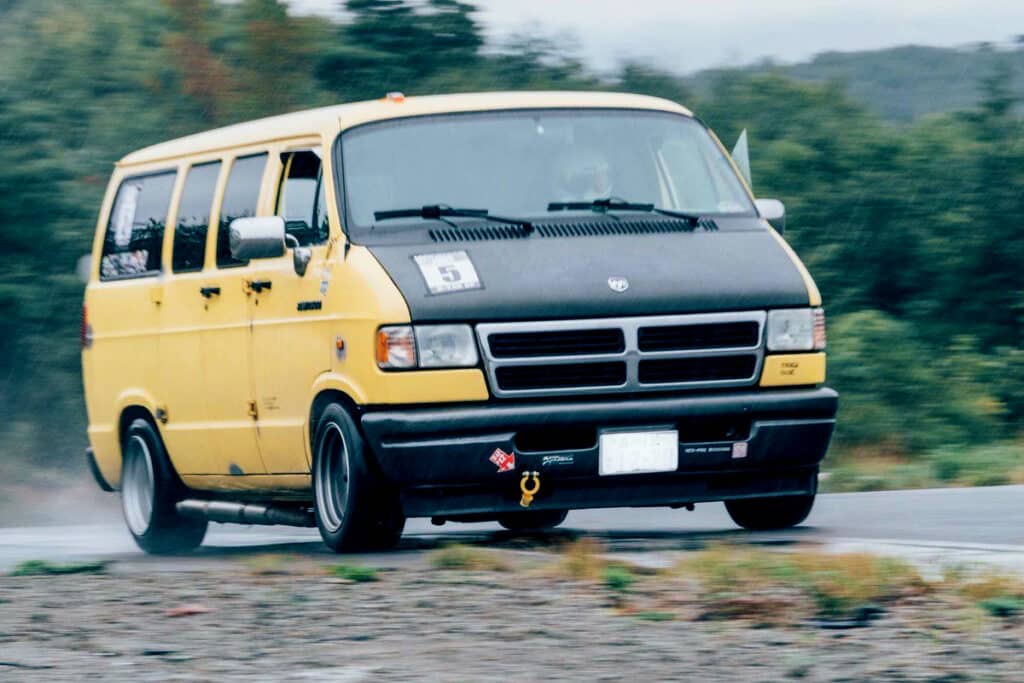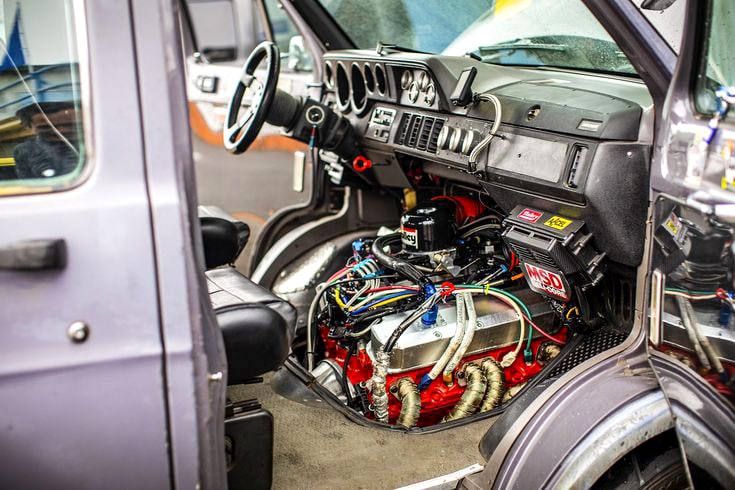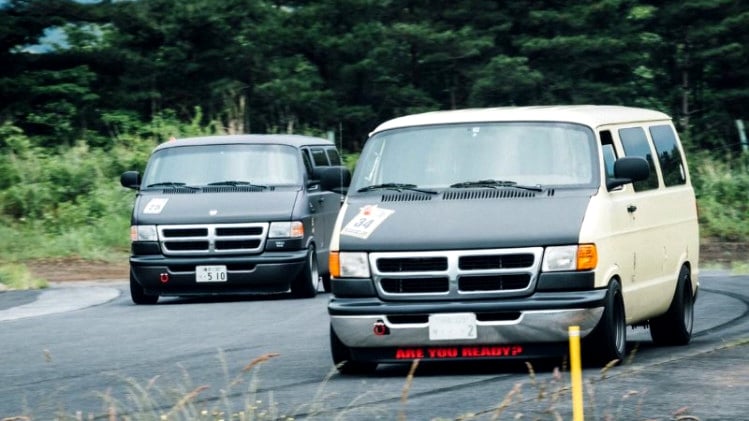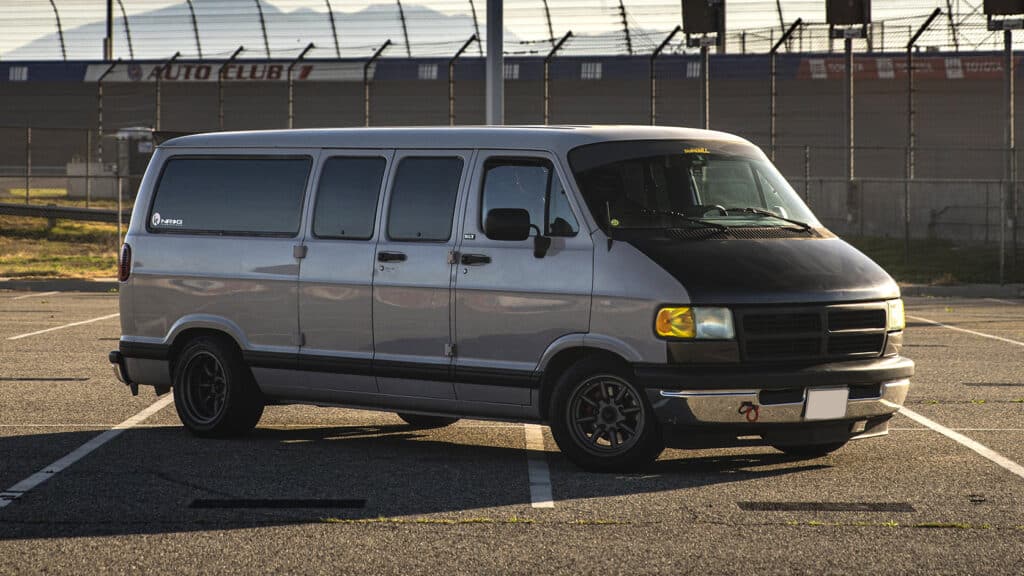Japanese car culture never ceases to amaze us; the variety, creativity, and craziness — all of it.
The sheer enthusiasm associated with esoteric subcultures like Dekotora, Onikyan, Itasha, and Bosozoku makes it clear just how deeply they’re woven into the fabric of Japan’s underground automotive scene.
One such subculture that we absolutely adore is Dajiban, and for several reasons. Firstly, it’s fascinating that Dodge van racing is a big deal in the land of the rising sun.
Secondly, it’s hilarious to watch tastefully slammed and decked-out Ram 1500s on a race track, sending it like there’s no tomorrow.
If you’re ever lucky enough to ride shotgun in one of these, definitely give it a shot, it’s an experience unlike any other.
In this article, we’ll explore what Dajiban is all about and what mods these vans typically run.
What Is Dajiban All About?

The word “Dajiban” is a Japanese portmanteau from the words “Dodge” and “Van”. The initiation of Dajiban into Japan’s automotive community can be attributed to its utilitarian roots.
These vans were originally used to transport motorcycles and all the necessary equipment to race tracks, considering how popular motorcycle racing is in Japan.

For some reason, just for kicks perhaps, people began racing their vans on the track. This eventually led to them building and modifying the vans to make them more race-worthy.
This involves a lot more than just exhaust system upgrades and aftermarket suspension; these guys go all out.

We’re talking massive turbos, engine swaps, custom made suspension components, and roll cages. Some vans even get rid of their windows and rear windshields to try and shave a few milliseconds off their lap times.
Their weapon of choice is the original B-Series Dodge Ram from the 70s. The vans are famous for their uniframe design which involves a sedan-like unibody but with ladder channels running underneath.
This meant the chassis could take the beating, and the only parts that needed significant adjustments were the suspension components.
One of the reasons to lower the ground clearance and ride height on these vans is to lower the high suspension roll center and the center of gravity as a result. This is very much needed, considering how tall the vans are.

Many of these Dajiban builds still have their original column shifters, and seeing the drivers effortlessly rev-match without missing a shift is quite a sight.
Other mods include:
- Side-exit exhausts,
- Custom lowering springs,
- Aftermarket intake manifolds, and
- Cooling system upgrades.
Watanabes Everywhere

One thing that you’ll immediately notice about 90% of Dajiban vans is that almost all of them run both authentic and knock-off Watanabe rims.
These iconic 8-spoke wheels scream JDM and they go beautifully with the overall aesthetic and fitment of these vans.
Dajibans Love Going Sideways

Driving sideways in Japan isn’t limited to heavily tuned drift cars on Togues. After all, these are rear-wheel-driven torque monsters with big old V8s under the hood.
That’s pretty much all you need to break traction and go to town. It’s quite a spectacle seeing one of these going lock to lock through corners.
Concluding Thoughts

The impact of Japanese automotive culture can be felt globally within the automotive community.
For instance, you can buy Hot Wheels Dodge Vans. Many open world racing games even feature them alongside some of the best JDM cars.
It’s always interesting to see JDM and USDM cultures blend. Stay tuned for our guide on how low rider culture has gained popularity in Japan!
Would a Dajiban make a fun daily driver for car enthusiasts? Let us know by leaving a comment below!
If you enjoyed reading this post, do share it on Facebook, Reddit, or your favorite online communities. We appreciate your support!

